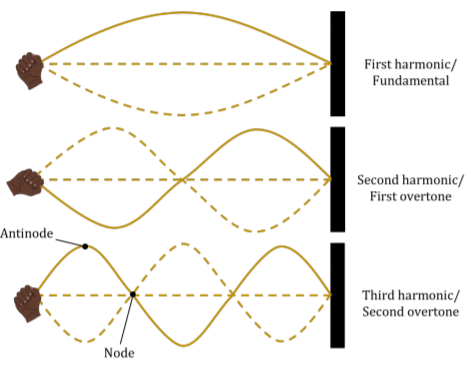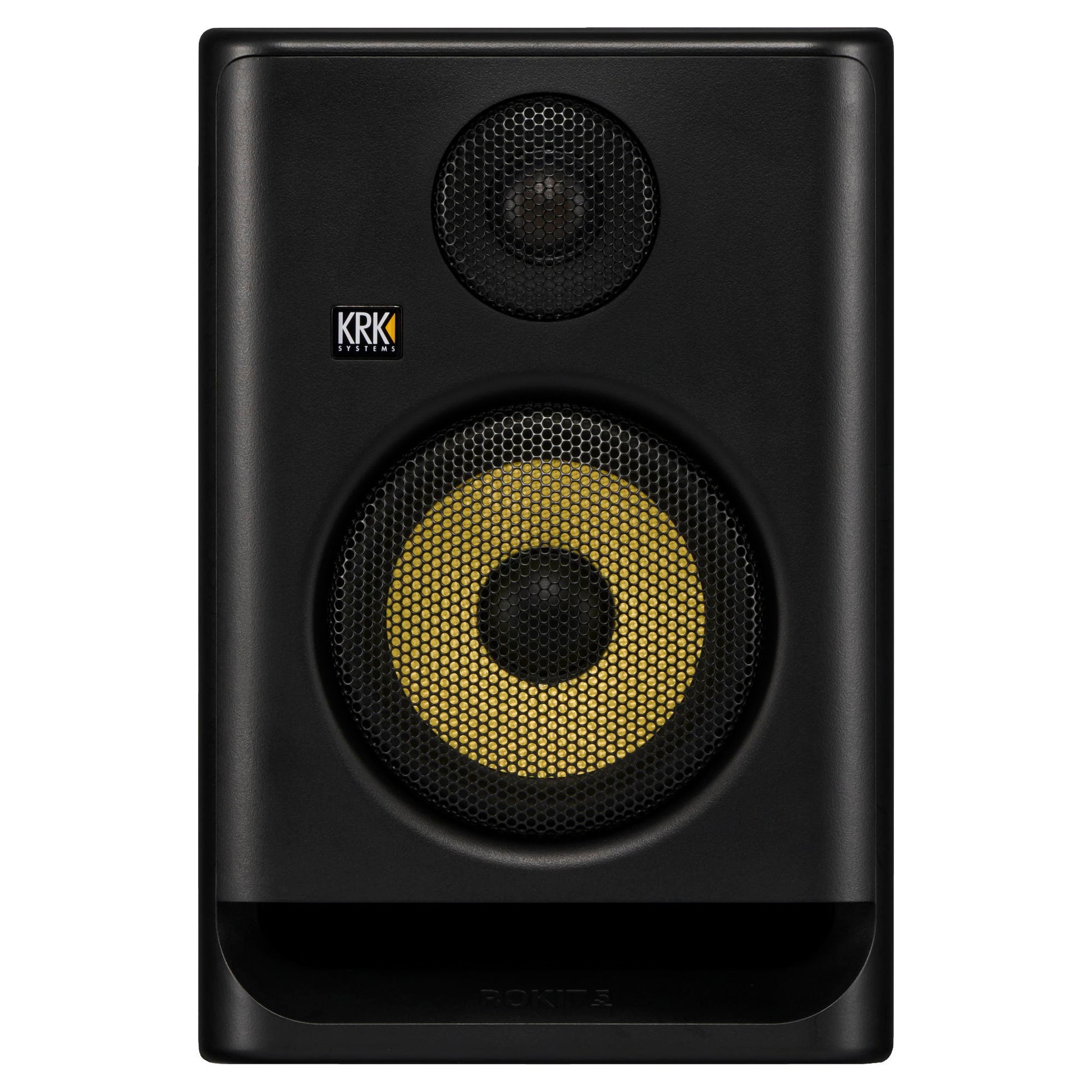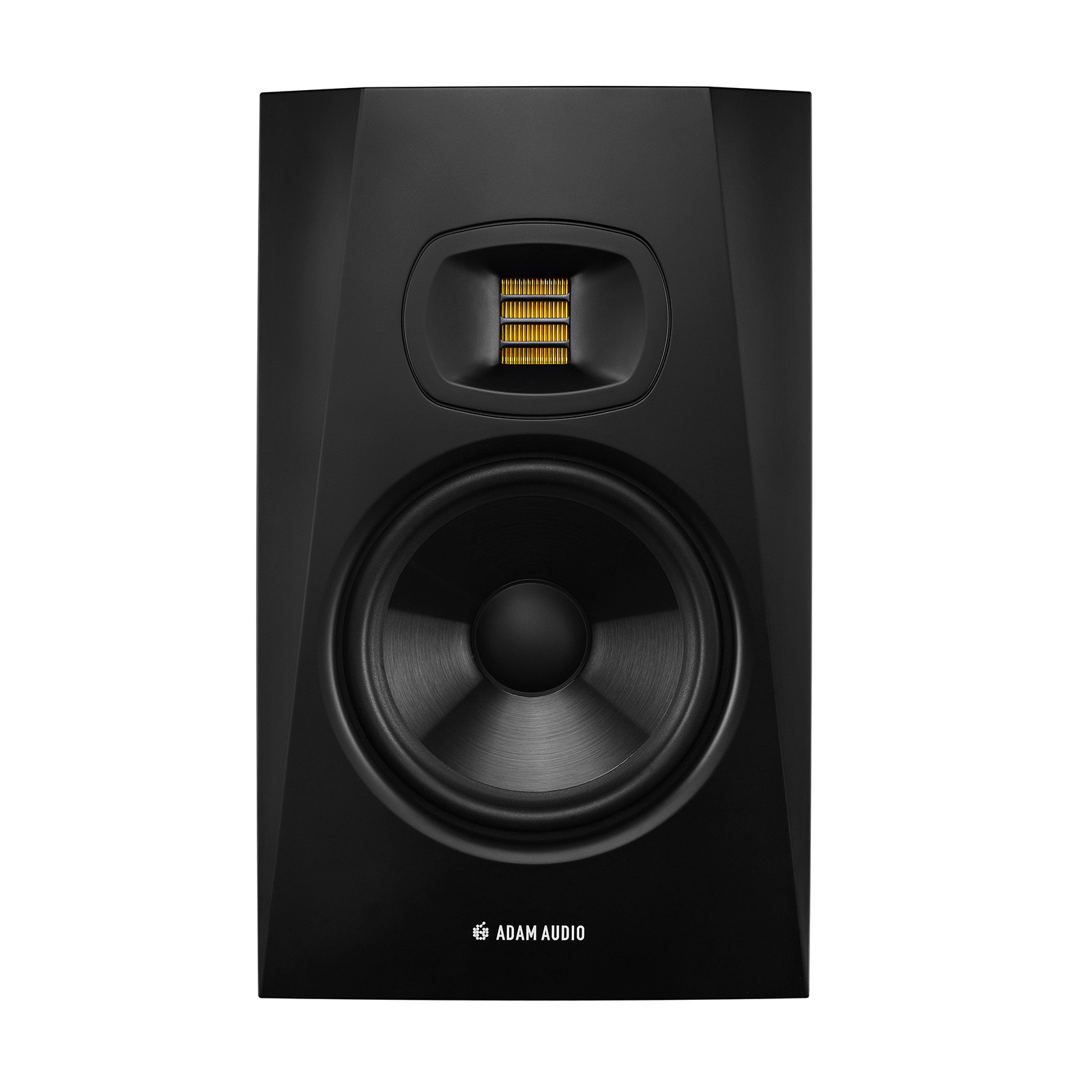There are many varieties of monitors on the market, primarily categorized by size. This article will aim to explain some of the quantitative aspects of these in a way that may help you make a decision on what option is best for your situation.
Active vs. Passive
All speakers can be divided into either active or passive categories. The main difference here is that active speakers have their own power source and amplifier, whereas passive speakers will require the use of a separate, powered amplifier. Active speakers also typically incorporate a degree of equalization options into their amplifiers, allowing you to tailor the response of your speaker to fit your room better, something which will be discussed below. It's worth noting that the vast majority of contemporary studio monitors on the market will be of the active variety, and are also the most widely used.
Speaker Size
The ability of a monitor to reproduce frequencies is dependent on its speaker size. As a general rule, the larger the speaker, or woofer, the lower the frequencies it can accurately reproduce. Common sizes for monitor woofers are five-, six-, seven-, and eight-inch varieties. As woofers are designed to reproduce low to mid-range frequencies, monitors will also come with a small speaker—called a tweeter—which is geared towards high-range frequencies. The frequency at which these speakers cross over with one another is left up to the manufacturer.
While large speakers will more cleanly and accurately reproduce lower frequencies, this does not mean that you should always aim to get the largest speaker within your budget. Your listening environment plays a large factor in how your speaker sounds, and often, in a small space with lots of parallel surfaces, a larger speaker can actually make it more difficult to get an accurate representation of your mix. This is due to an acoustic phenomenon known as standing waves (see below for further information). Additionally, it's possible to supplement smaller speakers with a dedicated subwoofer for low frequencies.
Digital Signal Processing (DSP)
While a smaller factor in most people's mind, the majority of monitors on the market these days will use some form of DSP to allow customization to the user's listening environment. This is usually implemented as EQ with varying degrees of tailoring available. For example, some may have a simple preset EQ curve that you can bring in or out, while others will have adjustable boosts and cuts over changeable frequencies. Some will even take the placement of the monitor into consideration, allowing greater control, whether the speaker is placed on a desk or soffit-mounted (tuned for a specific room). In general, entry-level monitors will have a more limited implementation of this with less features. As you go up the ladder in terms of price, you'll find more granular control of the speaker, along with much more thoroughly thought out implementations of DSP within a monitor.
A Note on Standing Waves and Room Acoustics
All sound waves have a physical real-world length, and this can greatly influence how they are heard in a room. If we assume an ambient temperature of 20°C/68°F, then we know the speed of sound (velocity) to be 343m/s. Now, to find our wavelength we divide the velocity by the frequency of our wave.
In other words, to find the wavelength of a 120 Hz frequency; we divide 343/120 to get a wavelength of 2.8583m.
How does this relate to our room acoustics? If you had a room with parallel walls which happened to be 2.8583m apart, or any multiple of this number (5.7166, 8.5749, 11.4332 etc.), then the frequency of 120 Hz can actually energize itself along its node points.

The real-world result is that when a 120 Hz frequency is played in this room, it may be much more audible than other frequencies, or much quieter than others. Standing waves can be either emphasized by constructive interference or dampened by destructive interference. Where you are located in the phase cycle will determine whether the frequency is either enhanced or dampened, with both giving the potential for a muddy and unclear sound.
Now, if we consider that any room on earth will have specific measurements, all of which correspond to specific frequencies, adding the fact that we have multiple parallel surfaces in a room, we can see how rooms can be troublesome in terms of emphasizing or masking certain frequencies. To counteract this, various forms of acoustic treatment can be used to either cancel out, dampen, or change these frequencies.
It should be noted that most studio monitors are near-field monitors, which are intended to be placed ~1m away from the listener. This does help to reduce the effect that the room will play on your listening experience, but the value of a treated room can't be understated.
Given the information above on standing waves and room acoustics, it's worth discussing speaker size in monitors. While larger monitors can reproduce lower frequencies more effectively, they also introduce more low-frequency energy into the environment. In smaller or untreated rooms, this often leads to exaggerated or unclear bass response, making accurate monitoring more difficult. Because of this, room acoustics play an equally important role in monitor selection.
The following guidelines provide a practical starting point:
Rooms under approximately 10×12 ft, with little or no acoustic treatment: 5-inch monitors recommended.
Rooms around 10×12 ft to 12×15 ft, with light acoustic treatment: 6-inch monitors recommended.
Rooms 12×16 ft and larger, with moderate to substantial acoustic treatment: 8-inch monitors recommended.
These recommendations are not strict rules—effective mixes have been made in a wide variety of spaces and setups. However, selecting a monitor size appropriate to your room can significantly improve accuracy and reduce issues caused by room modes and excessive low-frequency buildup.
Lastly, while selecting and recommending a pair of monitors can be a somewhat subjective task, it's fair to use the adage of “you get what you pay for.” What this translates to in terms of studio monitors generally relates to build quality, materials used, acoustic design, DSP design, and potential innovations or unique features. With that in mind, we've determined 3 tiers of recommendations: Foundational, Advanced and Premium levels.
Support Picks for Monitors
Foundational Level
The foundational level of monitors provides a solid, but affordable experience which can be built upon. Typically, these monitors will provide a great listening experience, but may have slightly lower build quality materials, or lack some of the more customizable options that higher tiers will have. Again, note that if your room supports it, larger monitors will provide a more accurate reproduction of low frequencies. But if you have a smaller and untreated room, then larger monitors may be detrimental to your listening experience. Our recommendations for this price tier are as follows:
- Yamaha HS Series

- JBL 300 Series

- KRK Rokit G5 Series

- Adam Audio TV7

- Kali Audio LP-6 V2

Advanced Level
The monitors in the Advanced level offer more refined features and higher-quality performance, but this might only be noticeable in a properly sized and acoustically treated room. We recommend choosing from these models only if your listening environment can support their accuracy.
- Genelec 8010A 3-inch

- Focal Alpha Series

- Kali Audio IN-8 V2

Premium Level
The same principles as the prior tier apply here. Rather than recommending specific models, we've recommended brands whose entire lineup would be considered premium tier.
- Genelec
- ATC
- Focal
- Barefoot
- Amphion

